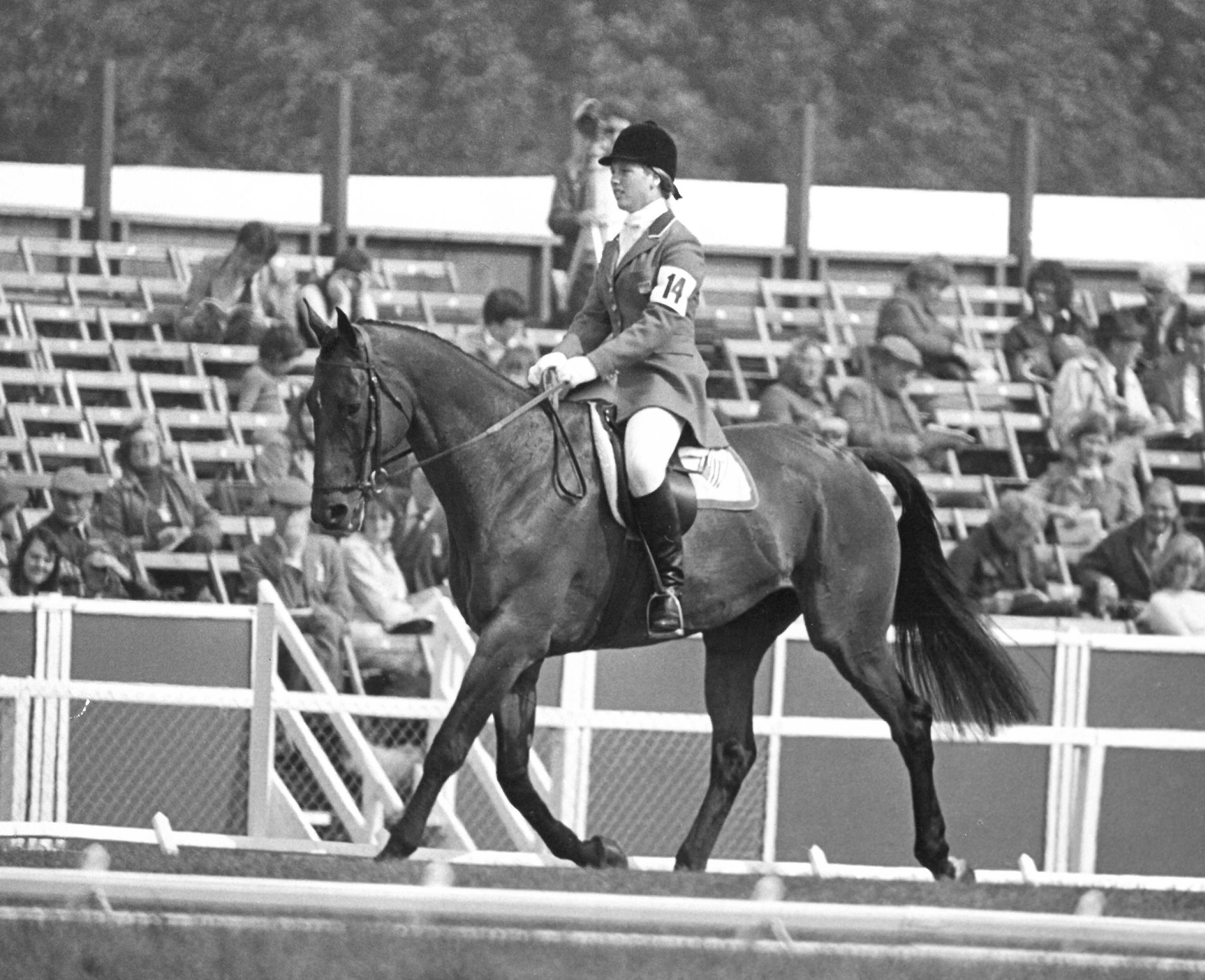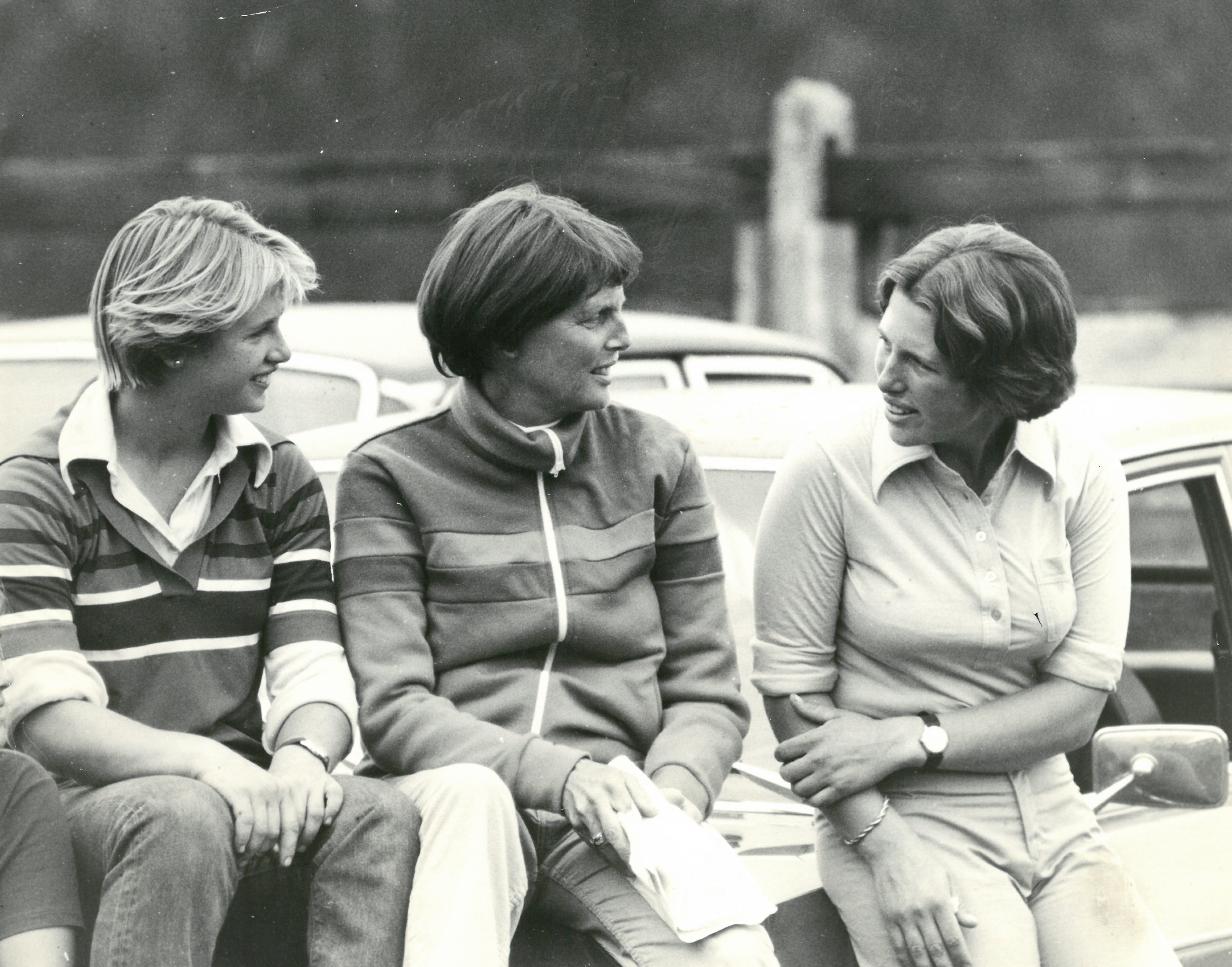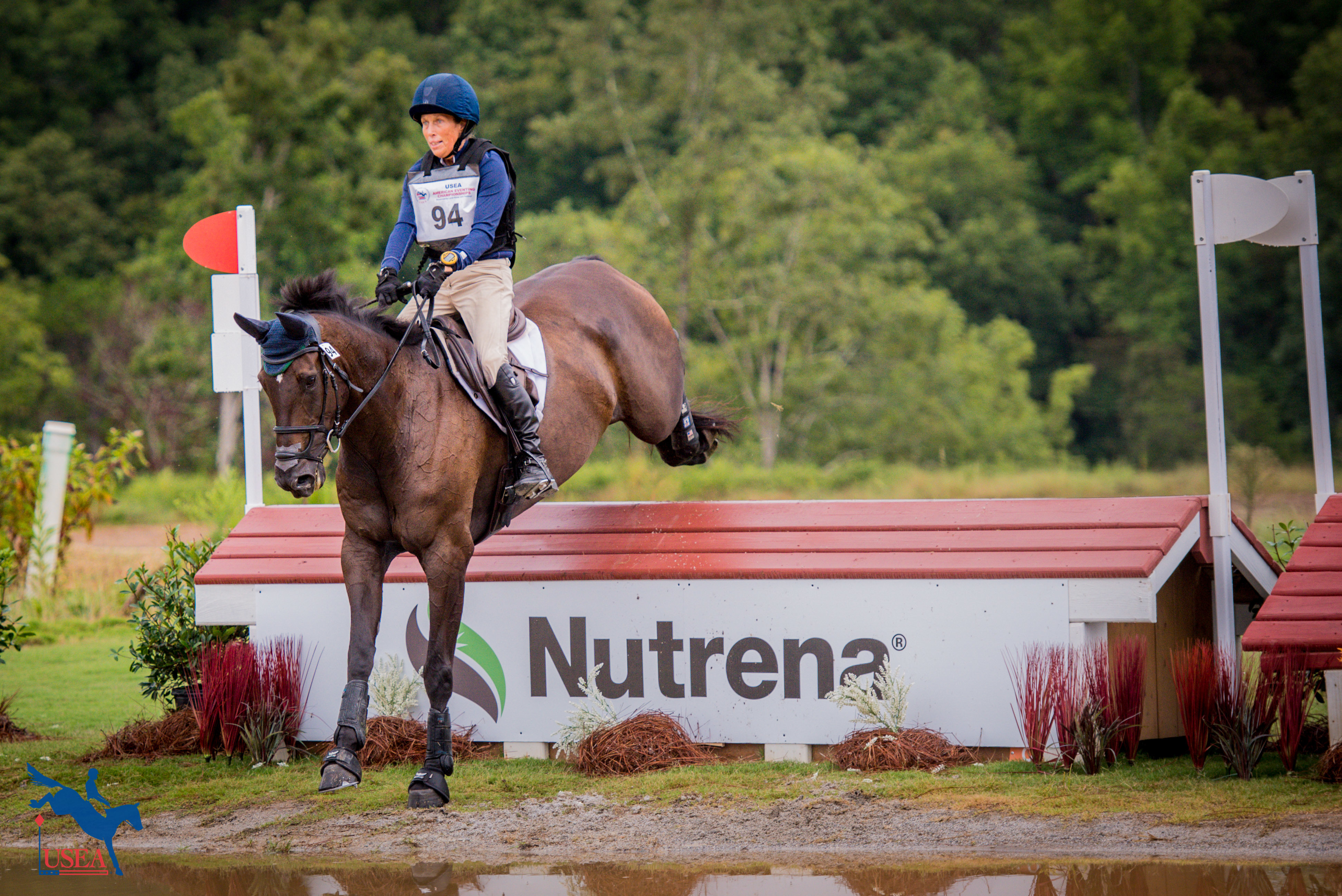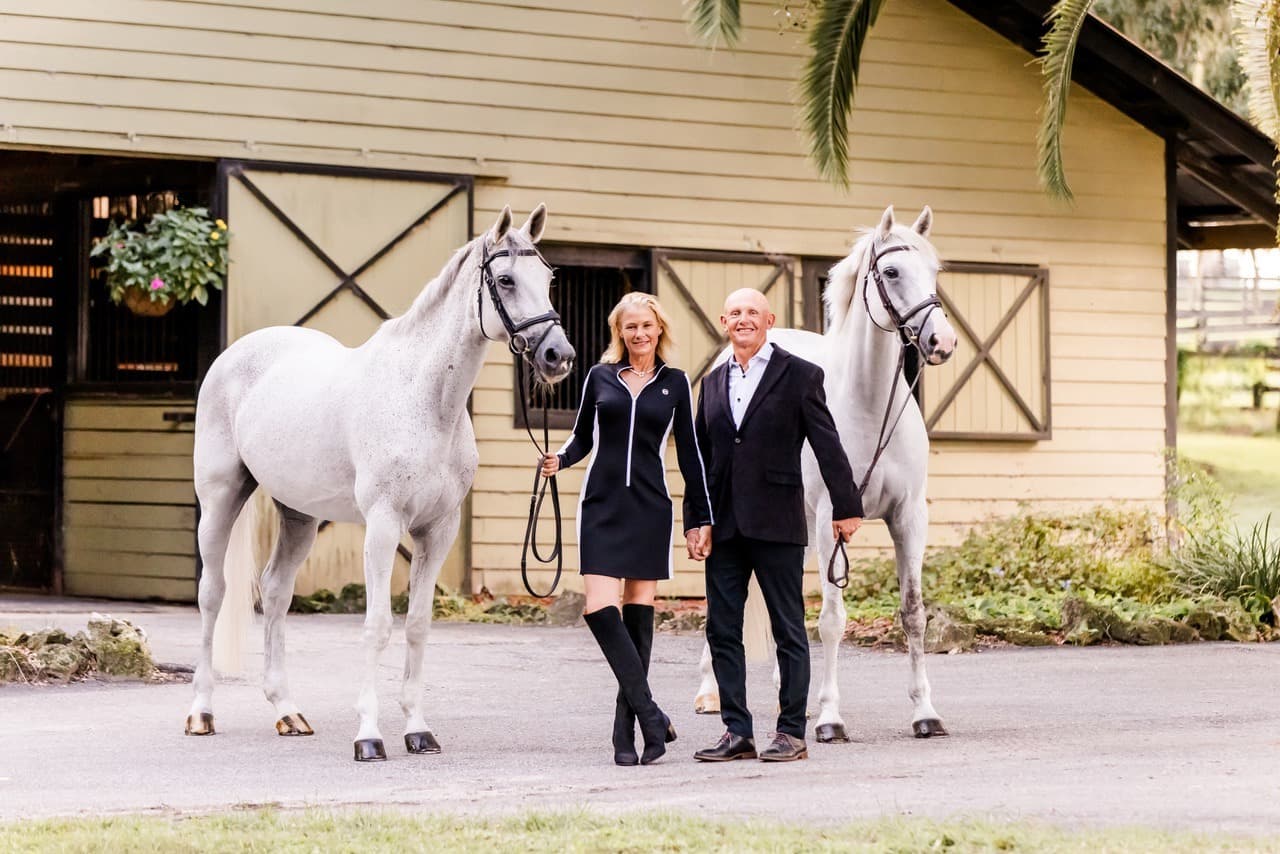Memories from the Vet Box with Beth Perkins

“The best description I can give of what it was like to compete [Furtive] in the long format is that he made me fearless,” said Beth Perkins. At just 18 years old, the fearless Perkins placed sixth individually at the 1974 Burghley World Championships with Furtive. Since then, Perkins has dedicated her life to the sport of eventing. She’s experienced the highs, the lows, and the changes to the sport. She’s competed at the toughest events in the world and has earned top placings and team medals along the way.
“It is hard to believe Burghley was nearly 50 years ago,” said Perkins. “It was such a different time, and the sport has changed so much since then. The U.S. team had been training in England most of the summer leading up to the World Championships. We were based in Wiltshire at Lord and Lady Hugh Russell’s and we each had two horses to ride, so we had been competing at other events all over England but there is nothing quite like driving into the grounds and seeing Burghley House.”
“While we were unloading tack trunks, Mike Plumb was holding one end of a trunk and I the other (walking backward) and he cracked some sort of joke which made me laugh and trip, and I dropped the trunk on my foot, breaking three bones. Jack Le Goff was finally convinced that I truly was injured when x rays showed the fracture. I remember Carol Davidson wheeling me to the loo in a wheelbarrow. Someone came up with some crutches, and a zipper was put in the back of my boot so I could jam my foot in. Walking the cross-country on crutches got to be pretty painful with bloody blisters on my hands. Back then, if you had a fall on cross-country you could get back on, so there was some concern about my ability to remount and I was made to ride as an individual. I ended up finishing sixth, but the team won a gold medal, which was a first [at the World Championships], and cause for much celebration. It was great.”
There were six riders representing the U.S. at the 1974 World Championships, four to a team and two individuals. The gold medal team consisted of Bruce Davidson on Irish Cap, who won the individual gold medal, J. Michael (Mike) Plumb on Good Mixture, who won the individual silver medal, Denny Emerson on Victor Dakin, and Don Sachey on Plain Sailing. The two individuals were Beth Perkins on Furtive and Caroline Treviranus on Cajun.
Despite her injury, Perkins has many fond memories competing at the 1974 World Championships. “My favorite memory would be coming out of the dressage ring and Jack having tears in his eyes telling me that I had made him very happy.”

The following year was the 1975 Pan American Games in Mexico where Furtive and Perkins finished fifth individually and helped secure the team gold medal for the U.S. Although the U.S. team was victorious in Mexico, the experience was quite different from the 1974 World Championships.
“The team still came away with a gold medal, but I remember the competition as being stressful,” explained Perkins. “The event was held on an army base which caused some problems. I ended up with time faults on roads and tracks because I was blocked by a marching band practicing on the phase C track in the middle of the woods, and I could not get by no matter how loud I screamed ‘Alto!’ which may have been the wrong word and they couldn’t hear me anyway.”
After getting through phase A, B, and C of endurance day, on phase D (cross-country), Perkins remembers a combination that was particularly challenging. “There was a Normandy bank on cross-country with a slide on the landing side that I was worried about and Furtive jumped it well and stayed on his feet despite me dropping both reins and grabbing the cantle of the saddle. I got to the bottom and yelled back up the hill, ‘I stayed on!’ I can’t imagine anyone doing anything like that now. We are so much more serious,” said Perkins.

Perkins’s life in the sport of eventing started at an early age, many years before her success in 1974. Her mother, Essie Perkins, and her father, Read Perkins were both very involved in the sport, as well as her younger sister, Bea di Grazia. Over the years, Perkins has brought up many horses through the top levels of eventing including Cavourt, Prince Perkin, Susie D, Irish Trick, The Patriot, Noah II, GHF Sterling Spirit, Don’t Dali, and Sal Dali but, Furtive was the first horse to bring her name into the international spotlight.
“Furtive was the horse that taught me how to ride at the upper levels,” Perkins said of the Australian Thoroughbred. “He was 13 when my father bought him at an auction following the Munich Games. The Australians had a very lengthy quarantine and decided to sell their horses before heading home at the end of the competition. Furtive had already been to the Olympic Games in Mexico, he had completed Badminton, and he had run in the Cheltenham Gold Cup!”
“His best qualities were his bravery and his ability to stay on his feet! I honestly just pointed him at the jumps. Jack LeGoff would have to take all the credit for improving our dressage - many hours without stirrups! The show jumping was our weakest phase as Furtive didn’t have a great natural style or form over the show jumps, but back then it was mostly about the cross-country.”

47 years later and Perkins is still very active in the sport - she is currently competing at the Intermediate level with Handsome Harry, she’s a USEF ‘R’ certified course designer, and she was a 2021 recipient of the Roger Haller Educational Grant for Eventing Officials. Perkins eventing program is based in Green Creek, North Carolina, where she teaches students of all levels, and continues to train, sell, and compete event horses.
The long format that Perkins experienced in 1974 and 1975 included steeplechase (phase B) and roads and tracks (phase A and phase C) on endurance day. These phases were officially removed from competition at the 2004 Olympic Games but, the tradition lives on through the USEA Classic Series, which offers the long format at the Beginner Novice through Preliminary levels.
“I think the Classic Series is a great opportunity for people to learn how to get your horse fit. It is so good for riders to be able to ride forward to a jump at speed and it’s good for horses that pull to be let go and allowed to run a bit. Steeplechase will improve the confidence of a spooky or hesitant horse, and it helps teach riders how to be still coming to a fence,” said Perkins.
About the USEA Classic Series
The USEA Classic Series keeps the spirit of the classic long format three-day events alive for Beginner Novice through the Preliminary levels. Competitors can experience the rush of endurance day, including roads and tracks, steeplechase, the vet box, and cross-country, as well as participate in formal veterinary inspections and educational activities with experts on the ins and outs of competing in a long format three-day event. Riders who compete in a USEA Classic Series event during the year will have the chance to win a variety of prizes at the events from USEA sponsors. Click here to learn more about the USEA Classic Series.
The USEA would like to thank Bates Saddles, FITS, SmartPak Equine, Parker Equine Insurance, and Stackhouse & Ellis Saddles for sponsoring the USEA Classic Series.














